Subtotal: USD $120.00
Citroën was established in 1919 by André-Gustave Citroën. Within the first ten years of its history Citroën had become one of the largest car companies in the world.
All the legendary Citroën logos feature an illustration of two helical gears, which were patented by André Citroën in 1900. The idea came about during a visit by André to his family in Łódź, Poland. He became romantically involved with a woman named Olga Doussavitcha. She invited him to visit her uncle, an inventor. At his shop André spotted two wooden gears, the teeth of which were arranged in a V-shape. André saw the advantages of these gears, which are stronger, work quieter and can be smaller. He bought the exclusive right to their production method.
On almost all the brand’s logo versions the two chevron arrows are identical.
The color palette of the emblem changed several times through its history, but the chevrons never left the brand’s logo.
The original Citroën logo was created in 1919 by the brand’s founder, André Citroën, whose family company Engrenages Citroën specialized in the design and production of helical gears. The herringbone teeth of the gears became an inspiration for the famous chevron logo.
1919 — 1921
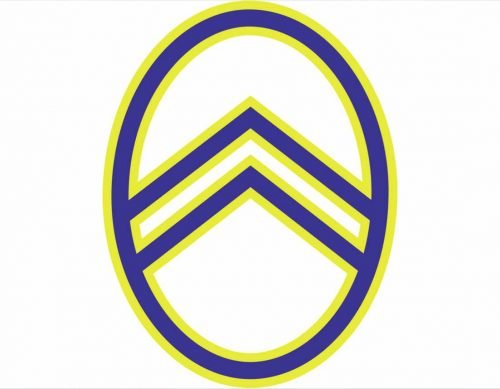
The original Citroën logo featured yellow and blue colors. The emblem was composed of oval-framed chevrons, executed in fine lines. It was a sophisticated and light brand’s logo.
1922 — 1931
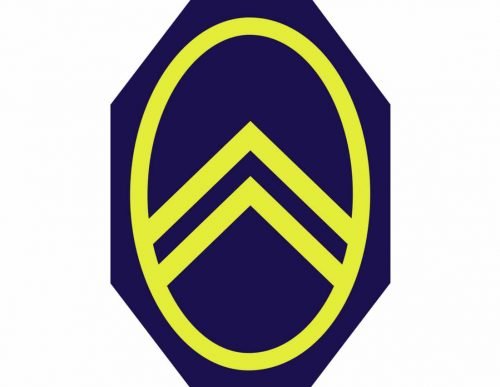
The blue and yellow color scheme remained, but the blue became a prevailing color. The oval emblem was placed on a solid blue octagon. The yellow lines are bolder and brighter, which made the logo more modern and crisp.
1932 — 1935
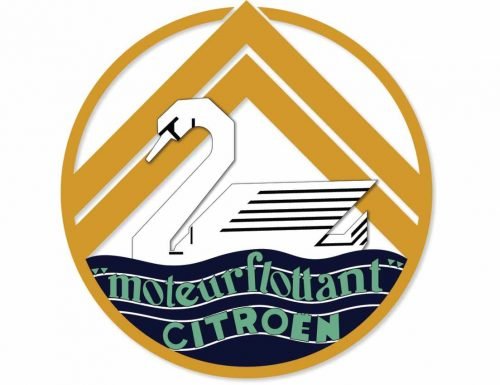
The only version of the Citroën logo, where one more graphical element was added. A white swan facing left was placed in the center of a round logo, with two chevrons above the swan and a blue bottom part, symbolizing water.
This was the first time the wordmark appeared on the brand’s icon. It is located on a blue background and has a wave shape.
1936 — 1959
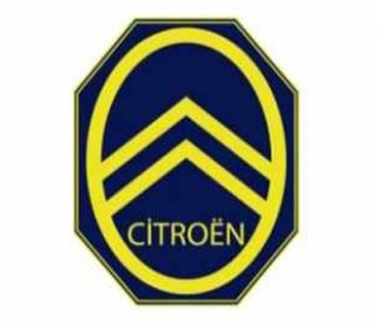
The come back of the octagon. It was more confident and framed in yellow, with a Citroën wordmark below the chevrons. The letter “I” featured a dot on the top of it, which balances the two dots of “Ë” and made the logo slightly ironic.
1959 — 1966

The logo was redesigned with a modern approach. The wordmark disappeared and the chevrons are three-dimensional now and enlarged. That is the first time when the two teeth of the chevrons are different in their shapes. The bright yellow is still the main color, and there is no more blue. The only addition to chevrons symbol is a thin contour of horizontally oriented grey oval as a background.
1966 — 1985

The Citroën logo came back to its original color palette, but the irregular 3D chevrons remained. They were placed in a white circle, located inside the blue square. The brand’s wordmark is placed in a white rectangle below, and executed in blue bold typeface, in all-caps. The dot above the letter “i” in Citroën is deleted.
In 1976 the brand became a part of PSA Peugeot Citroën Group. (In December 1974 Peugeot S.A. acquired a 38.2% share of Citroën. On 9 April 1976, they increased their stake of the then bankrupt company to 89.95%, thus creating the PSA Group.)
1985 — 2009

The color scheme of the logo was changed dramatically. The emblem is composed of two white chevrons placed in a red square. The wordmark is bigger now, with clear confident lines in black.
2009 — 2016
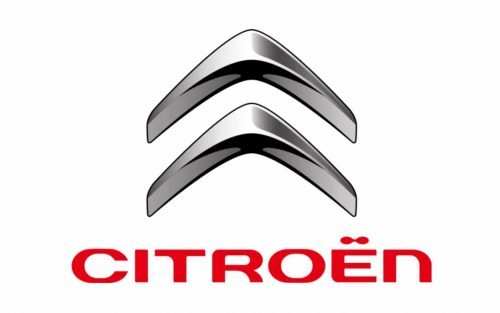
The logo, designed by Landor associates, brought back the symmetry of the chevrons and made them three-dimensional again. The color palette was changed to silver-grey and red, where silver is for the emblem and red — for the wordmark. The logo was styled to show the brand as strong and reliable, reflecting its power and passion.
2016 — Today

The current Citroën logo has a flat and simple design, but continues the same style and attempts to add sophistication. The grey color accents the sleek lines of its custom typeface.
UPDATE — September 27, 2023: The 10th logo evolution in the 103-year history of Citroën was unveiled today:
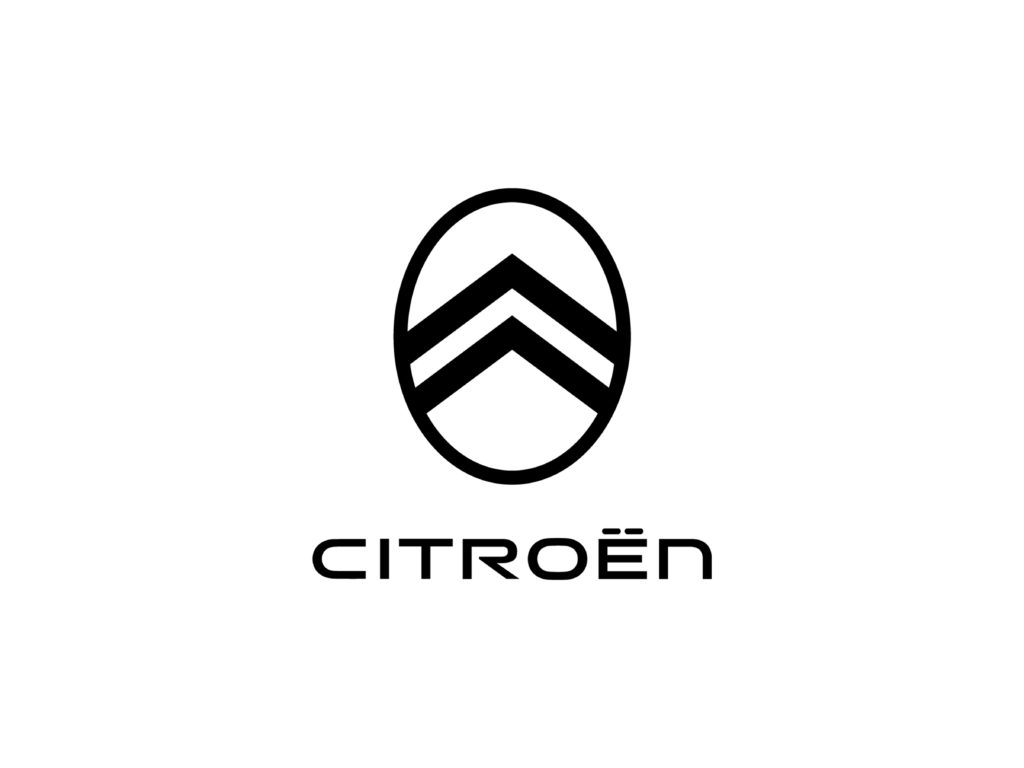
It is a design that the brand acknowledges is based on the original oval from 1919 but in a modern “further developed” form that will open a new chapter in its history. Read more here.
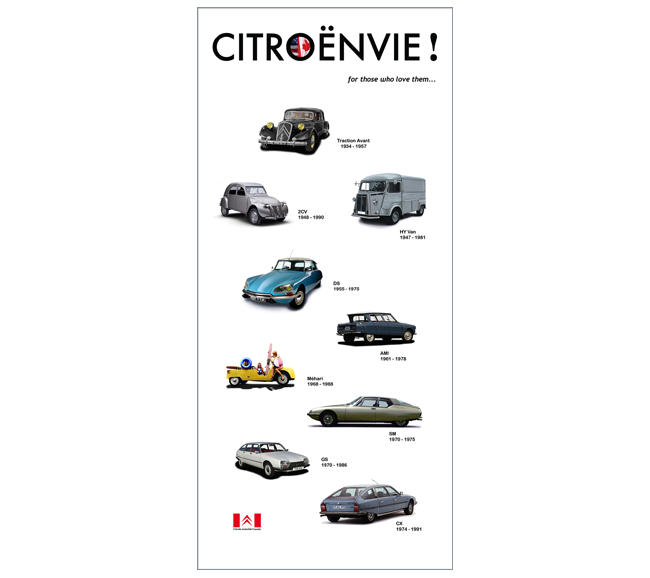 Citroënvie Bannner – 33″ x 80″
Citroënvie Bannner – 33″ x 80″ 
